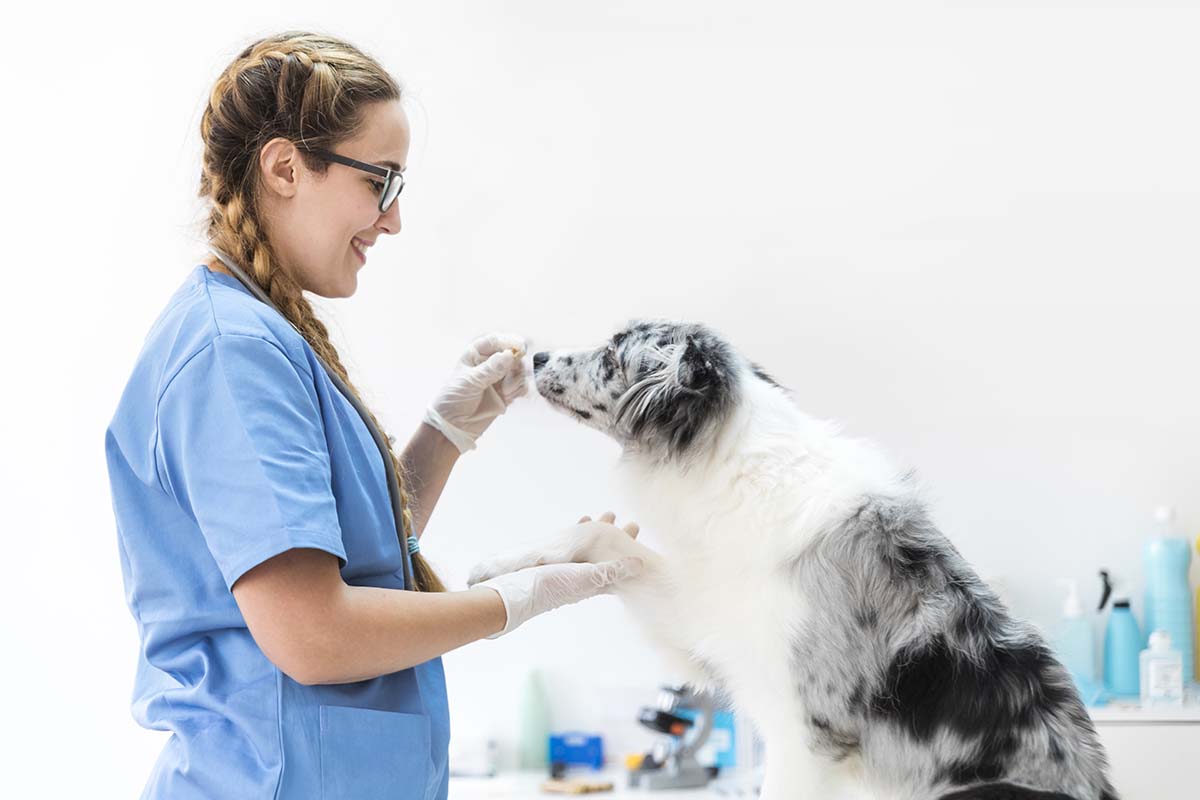How to Support Your Pet’s Wellbeing and Comfort
Key Points
Pet Choice Matters – Matching a pet to your lifestyle, space, and activity level is essential for long-term wellbeing.
Holistic Care Approach – Addressing physical, emotional, and mental needs ensures pets thrive at every life stage.
Breed Research is Key – Understanding temperament, health risks, and exercise needs helps prevent future challenges.
Pet ownership brings immense joy, but it also comes with the responsibility of ensuring our animal companions live comfortable, healthy lives.
Every pet deserves thoughtful care that addresses their physical, mental, and emotional needs throughout their lifetime.
Supporting your pet’s wellbeing requires a comprehensive approach that evolves as they age.
From selecting the right pet to making difficult end-of-life decisions, each stage demands different considerations and care strategies.
This guide explores essential aspects of pet care, from preventive health measures to managing chronic conditions.
Whether you’re caring for a playful puppy or an aging horse, understanding these fundamentals will help you provide the best possible life for your beloved companion.
Choosing the Right Pet for Your Lifestyle
Understanding Your Capacity
Selecting a pet that matches your lifestyle is the foundation of successful pet ownership.
Consider your daily schedule, living space, and activity level before bringing any animal home.
Different breeds and species have vastly different needs.
A high-energy border collie requires hours of exercise daily, while a cat might be content with indoor play sessions.
Research Breed Characteristics
Thoroughly research breed-specific traits, including temperament, exercise requirements, and common health issues.
This knowledge helps you prepare for potential challenges and expenses down the road.
For families with allergies or young children, hypoallergenic breeds offer excellent options.
Many Australian families are discovering breeds like cavoodles for sale in Melbourne, which combine the poodle’s low-shedding coat with the cavalier’s gentle temperament.
Long-term Commitment Considerations
Remember that pets can live 10-20 years or more.
Consider how your life might change during this time, including potential moves, career changes, or family additions.
Calculate the lifetime cost of pet ownership, including food, veterinary care, grooming, and potential emergencies.
Being financially prepared ensures you can provide consistent care throughout your pet’s life.
Matching Energy Levels
Your pet’s energy level should complement your lifestyle.
Active individuals might thrive with running companions, while homebodies may prefer calmer breeds.
Consider your physical capabilities too.
Large, strong dogs require handlers who can manage them safely, especially as the owner ages alongside their pet.
Recognizing and Addressing Health Issues Early
Common Warning Signs
Pets often hide discomfort instinctively, making it crucial to watch for subtle changes.
Decreased appetite, lethargy, or changes in bathroom habits can signal underlying issues.
Behavioral changes like increased aggression, hiding, or excessive vocalization often indicate pain or illness.
Trust your instincts when something seems off with your pet.
The Importance of Regular Checkups
Annual veterinary examinations catch problems before they become serious.
Senior pets benefit from bi-annual visits to monitor age-related changes more closely.
These checkups establish baseline values for blood work and other diagnostics.
Having this reference makes it easier to identify abnormalities when they occur.
When to Seek Specialized Care
Some conditions require expertise beyond general veterinary practice.
Eye problems, for instance, can progress rapidly and cause permanent damage if not treated properly.
If your pet shows signs of vision issues like bumping into objects, cloudy eyes, or excessive tearing, consult an Eye Specialist for Animals promptly.
Specialized equipment and training allow these experts to diagnose and treat complex ocular conditions.
Creating a Health Monitoring System
Keep a health journal documenting your pet’s weight, eating habits, and any unusual behaviors.
This record proves invaluable during veterinary visits.
Use smartphone apps or calendars to track medication schedules, vaccination dates, and preventive treatments.
Consistency in these areas prevents many common health problems.
Understanding Breed-Specific Concerns
Different breeds face different health challenges.
Hip dysplasia affects many large dogs, while brachycephalic breeds struggle with breathing issues.
Research your pet’s breed-specific risks and discuss screening tests with your veterinarian.
Early detection through appropriate screening can significantly improve treatment outcomes.
Managing Chronic Conditions and Pain Relief
Identifying Chronic Conditions
Chronic conditions like arthritis, allergies, and diabetes become more common as pets age.
Regular monitoring helps identify these issues before they severely impact quality of life.
Watch for signs like difficulty standing, reluctance to jump, or persistent scratching.
These symptoms often indicate manageable conditions that respond well to treatment.
Developing Comprehensive Treatment Plans
Work closely with your veterinarian to create a multi-modal approach to chronic conditions.
This might include medications, dietary changes, and environmental modifications.
Treatment plans should be flexible and adjust as your pet’s condition changes.
Regular follow-ups ensure the approach remains effective and side effects are minimized.
Modern Medication Options
Veterinary medicine has advanced significantly, offering targeted treatments for many conditions.
Allergic skin conditions, once difficult to manage, now have effective solutions.
For dogs suffering from allergic dermatitis, medications like Apoquel provide rapid relief from itching.
Pet owners can now conveniently buy Apoquel for Dogs Online with proper veterinary prescriptions, making treatment more accessible.
Following Prescription Guidelines
Always administer medications exactly as prescribed.
Skipping doses or stopping treatment early can lead to resistance or condition relapse.
Store medications properly and check expiration dates regularly.
Dispose of expired medications safely through veterinary clinics or pharmacy take-back programs.
Complementary Therapies
Physical therapy, acupuncture, and massage can complement traditional treatments.
These modalities often reduce the need for higher medication doses.
Swimming provides excellent low-impact exercise for arthritic pets.
Many veterinary rehabilitation centers offer underwater treadmills for controlled exercise programs.
Monitoring Treatment Effectiveness
Keep detailed notes about your pet’s response to treatments.
Document good days and bad days to help your veterinarian adjust protocols.
Blood work may be necessary to monitor organ function during long-term medication use.
These tests ensure treatments remain safe and effective.
Nutritional Support and Joint Health
Age-Appropriate Nutrition
Nutritional needs change throughout your pet’s life.
Puppies require calorie-dense foods for growth, while seniors benefit from lower-calorie options to prevent obesity.
Choose high-quality foods appropriate for your pet’s life stage and health status.
Consult your veterinarian before making significant dietary changes.
Supporting Joint Health
Joint health becomes increasingly important as pets age.
Maintaining ideal body weight reduces stress on joints and can delay arthritis onset.
For larger animals like horses, joint support is crucial given their size and activity levels.
Products like 4Cyte Joint Supplements for Horses provide targeted nutritional support for equine athletes and aging horses.
Key Nutrients for Joint Support
Glucosamine and chondroitin support cartilage health and may slow degenerative changes.
Omega-3 fatty acids provide anti-inflammatory benefits.
Green-lipped mussel extract and turmeric show promise in managing joint inflammation.
Discuss supplement options with your veterinarian to avoid interactions with other treatments.
Weight Management Strategies
Obesity exacerbates joint problems and contributes to numerous health issues.
Regular weigh-ins help track progress toward ideal body condition.
Measure food portions carefully and limit treats to 10% of daily caloric intake.
Consider using vegetables like carrots or green beans as low-calorie treat alternatives.
Special Dietary Considerations
Pets with medical conditions may require therapeutic diets.
Kidney disease, diabetes, and food allergies all benefit from specialized nutrition.
Transition to new foods gradually over 7-10 days to avoid digestive upset.
Monitor your pet’s response and report any concerns to your veterinarian.
Quality of Life Considerations
Creating a Comfortable Environment
Modify your home to accommodate aging or disabled pets.
Non-slip rugs prevent falls, while ramps help pets navigate stairs safely.
Elevated food and water bowls reduce neck strain for arthritic pets.
Orthopedic beds provide joint support and improve sleep quality.
Mental Stimulation and Enrichment
Mental exercise remains important throughout your pet’s life.
Puzzle feeders, training sessions, and interactive toys prevent cognitive decline.
Adjust activities to match your pet’s physical capabilities.
Scent work provides mental stimulation without requiring intense physical activity.
Maintaining Social Connections
Pets benefit from appropriate social interaction.
Regular, gentle playdates or calm walks with familiar friends support emotional wellbeing.
Monitor interactions carefully, as pain or illness can make pets less tolerant.
Respect your pet’s need for quiet time when they’re not feeling well.
Recognizing Declining Quality of Life
Quality of life assessments help determine when intervention is needed.
Consider factors like appetite, mobility, hygiene, and interest in favorite activities.
Keep a calendar marking good and bad days.
When bad days consistently outnumber good ones, it’s time for serious discussions with your veterinarian.
Making Compassionate End-of-Life Decisions
End-of-life decisions are among the most difficult aspects of pet ownership.
Consider your pet’s dignity and comfort above all else.
When quality of life becomes unsustainable despite treatment, putting a dog down may be the kindest option.
Many veterinarians offer in-home euthanasia services, allowing pets to pass peacefully in familiar surroundings.
Grief Support and Memory Preservation
Grief after pet loss is valid and deserves acknowledgment.
Consider pet loss support groups or counseling if needed.
Create meaningful memorials through photo albums, paw print keepsakes, or charitable donations in your pet’s name.
These tributes honor the bond you shared.
Additional Wellness Strategies
Preventive Care Protocols
Stay current with vaccinations and parasite prevention.
These simple measures prevent serious diseases and reduce veterinary expenses.
Dental care often gets overlooked but significantly impacts overall health.
Regular brushing and professional cleanings prevent painful dental disease.
Emergency Preparedness
Maintain a pet first-aid kit and know basic emergency procedures.
Have your veterinarian’s emergency contact information easily accessible.
Create an emergency care plan including designated caregivers and financial arrangements.
Pet insurance can help manage unexpected medical costs.
Building a Healthcare Team
Develop relationships with various pet care professionals.
Your team might include veterinarians, groomers, trainers, and pet sitters.
Choose providers who align with your care philosophy and communicate well.
Strong professional relationships benefit your pet throughout their life.
Conclusion
Supporting your pet’s wellbeing and comfort requires dedication, observation, and proactive care.
By addressing physical health, mental stimulation, and emotional needs, you create an environment where your pet can thrive at every life stage.
Remember that each pet is unique, and what works for one may not suit another.
Stay flexible in your approach and maintain open communication with your veterinary team.
The journey of pet ownership includes both joyful moments and difficult decisions.
Through it all, your commitment to your pet’s wellbeing demonstrates the depth of the human-animal bond.
Start implementing one new wellness practice today, whether it’s beginning a health journal or scheduling an overdue checkup.
Small steps toward better care create significant improvements in your pet’s quality of life.
Your pet depends on you for everything, from daily meals to medical decisions.
By staying informed and attentive, you ensure they receive the love and care they deserve throughout their precious lives.

























